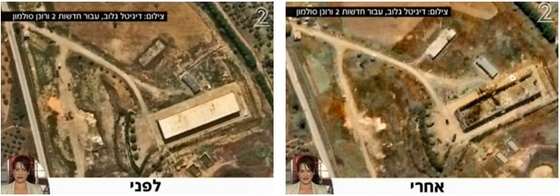Almost three weeks after confirming that Israel carried out an airstrike against Yakhont missiles near the Syrian port city of Latakia on July 5, US officials now say that some of the missiles were not hit as they had been moved in advance.
American intelligence analysts have concluded that a recent Israeli airstrike on a warehouse in Syria did not succeed in destroying all of the Russian-made antiship cruise missiles that were its target, American officials said on Wednesday, and that further Israeli strikes are likely.
…While the warehouse was destroyed, American intelligence analysts have now concluded that at least some of the Yakhont missiles had been removed from their launchers and moved from the warehouse before the attack.
…After the Israeli attack, the Assad government sought to hide the fact that the missiles had been missed by setting fire to launchers and vehicles at the site to create the impression that the strike had landed a devastating blow, according to American intelligence reports.
The New York Times further reports that American officials said the Israeli jets “flew over the eastern Mediterranean, fired air-to-ground missiles and never entered Syrian airspace.”
The Daily Beast previously reported that a Defense Intelligence Agency (DIA) assessment had concluded that Israeli jets had used “precision-guided munitions” to hit their targets in Latakia.
In the days after the July 5 strike, Israeli media outlets released satellite imagery of the location of the strike. In one of the images, a warehouse appeared to have been destroyed along with its contents, while another image showed a series of storage warehouses, some of which appeared to have taken hits.
Today’s leaks come just a couple of days after Israeli media reported that the Israeli Navy was installing a defense system on its missile boats that is intended to protect against a number of threats, including the Yakhont anti-ship missile.
Since the start of the uprising against Bashar al Assad in Syria, the Israeli Air Force (IAF) has carried out at least three other strikes in Syria. In those strikes, Israeli aircraft never entered Syrian air space, according to reports, but rather used a lofting maneuver while over Lebanon.
In late January, the IAF reportedly struck targets near the Scientific Studies and Research Center (Centre D’Etudes et de Recherches Scientifiques) in Jamraya. According to reports, the IAF targeted a weapons convoy, which included Russian-made SA-17 antiaircraft missiles, near the facility.
While some reports of the January strike suggested that the SSRC facility itself was targeted and “flattened,” satellite imagery revealed that the facility, known for its ties to Syria’s chemical weapons program, was relatively unscathed. The images did show a burnt road near the facility, possibly indicating the location of the Syrian weapons convoy when it was hit, however.
In early May, the IAF carried out two separate strikes in Syria. The first strike, on May 3, reportedly targeted Fateh-110 surface-to-surface missiles from Iran, which were located at Damascus International Airport. According to the New York Times, the missiles were flown through Iraqi airspace from Iran before reaching Damascus, where they were destroyed. The second strike, on May 5, reportedly retargeted the SSRC facility that was struck in January.
Although Israeli officials have not taken official responsibility for any of the alleged strikes, they have repeatedly warned that they are prepared to act in Syria to prevent Hezbollah and other terror groups from obtaining advanced weaponry.
Are you a dedicated reader of FDD's Long War Journal? Has our research benefitted you or your team over the years? Support our independent reporting and analysis today by considering a one-time or monthly donation. Thanks for reading! You can make a tax-deductible donation here.









2 Comments
Why would the Obama Administration be ‘leaking’ this information?
http://www.worldtribune.com/2013/08/01/diplomat-obama-approved-intelligence-leaks-on-israeli-air-strikes-in-syria/